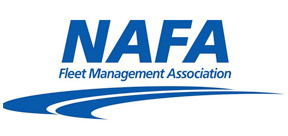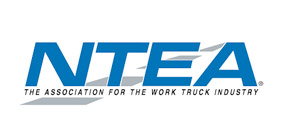Implementing sustainable asset management
by MARK DECLERCQ, P.E. | City of Grand Rapids city engineer

Through a two-year education and grass roots movement, the city of Grand Rapids started thinking and plotting some basic steps with asset management planning, working toward sustainability.
What is asset management? For the city of Grand Rapids, Mich., asset management is transformational. As city engineer for the second largest city in Michigan, transformation at multiple levels of our local government was necessary if the city of Grand Rapids was going to get through the “Great Recession” and move forward on a sustainable path. As in many municipal cities during this period, there were many reductions and changes in how services were delivered to its customers. However, there was one topic that was sure to emerge, and that was called sustainable asset management.
To break it down, think of your personal vehicle. You purchase a brand-new car and begin to enjoy the ride. Next, you’re reminded every so many miles to get your oil changed. After about 50,000 miles or so, you begin to experience light-duty repairs such as new brakes. Then once you get over a certain amount of miles, more heavy-duty repairs occur like a set of four new tires. By now, these repairs are beginning to become more frequent and add up in cost.
Perhaps you’ve weathered the cash fl ow on repair bills and your vehicle is on its second wind. Or, the frequency and cost of repairs is burning a hole through your wallet. At this point, your vehicle has simply reached the end of its life and you decide, “I need a new car!”
In the example above, routine maintenance referred to the oil changes. If it’s frequently skipped or forgotten, your engine performance or life may be reduced. There are always repairs on your vehicle just from the nature of owning it. Think of all the repairs that have cost you over $250, or perhaps you forgave all of the ownership hassles and just leased. Not a bad idea, but probably not too many of your municipal assets are leased. Finally, you’ve racked up tens of thousands of miles, a few thousand dollars in repair costs and an interior that shows it’s been to one too many of your kids’ sporting events. You finally trade that jalopy in for a new car; and, the cycle begins all over again. Sound familiar on your municipal assets?
Apply this to your assets at a municipal level. Perhaps you’re a city manager and have to deal with presenting a challenging fiscal budget of deferred maintenance costs to your mayor and city commissioners. Maybe you’re the chief financial officer who has to go find the funding — by the way, these folks can get really creative and be your best advocates for these situations. Perhaps you’re the department head who has to painstakingly witness your staff constantly attend to failed equipment or potholed riddled streets. Don’t fret, there is a solution and it begins with planning and managing your assets.
 In any of these cases, asset management planning can help you deal with this by getting your arms wrapped around the assets you manage. Ask yourself, “what do I oversee, what condition is it in and how much longer is it going to last?” Don’t be embarrassed if you can’t answer this question. It is a common expression. I saw the frustration on the faces of my fellow colleagues, but in the wake of needing to transform, start somewhere and start small. Let’s face it, it’s not likely that your municipal fiscal budget will be able to afford to fund all of the deferred maintenance, or at least not all at once. But understanding what you have as a current state and being able to identify a fundable path to the future state is a step toward the direction of sustainable asset management.
In any of these cases, asset management planning can help you deal with this by getting your arms wrapped around the assets you manage. Ask yourself, “what do I oversee, what condition is it in and how much longer is it going to last?” Don’t be embarrassed if you can’t answer this question. It is a common expression. I saw the frustration on the faces of my fellow colleagues, but in the wake of needing to transform, start somewhere and start small. Let’s face it, it’s not likely that your municipal fiscal budget will be able to afford to fund all of the deferred maintenance, or at least not all at once. But understanding what you have as a current state and being able to identify a fundable path to the future state is a step toward the direction of sustainable asset management.
For Grand Rapids, it was about a two-year education and grass roots movement in order to start thinking and plotting some basic steps with asset management planning. As a result of the community, city commission, mayor and organizational team effort, the city of Grand Rapids has asset management plans for assets in its general operating fund; enterprise and public works portfolio; capital improvement fund; and Vital Streets program. The parks system, bridges, street lighting, sidewalks, flood protection system, roofs, surface parking lots are all under asset management plans, or at least inventoried and assessed. The current value of these assets exceeds $800 million.
Rome wasn’t built overnight, neither were our asset management plans. The city engineer’s office began with a 12-plus month education program, teaching what asset management is and its value to top managers, middle managers, senior operators and others who oversee city assets. The heavy lifting of asset inventory and condition assessment was typically performed by local consultants whose skill set was able to deliver on such a specialized scope of work that required matching the professional expertise with the asset being assessed.
In its basic form, there are typically 10 steps within asset management in order to build a simple plan. I call this the 10 rungs of a “ladder.” For most of this article, I’ve talked about inventory, condition assessment and life cycle of an asset. This represents the bottom third of the “ladder.” But there needs to be some level of importance and priority of what gets funded first, second, third, etc. And most importantly, there needs to be a discussion on level of service. In other words, what are the expectations of the public using the asset versus the services that a municipality will need to deliver in order to meet those expectations?
Where the shortfall occurs is called the “gap” — either human, financial or technical resources provided by the municipality. This represents the middle third of the “ladder.” The upper third of the “ladder” is aligning your investment strategies and building two plans: a level of maintenance plan and a capital improvement plan. The city of Grand Rapids most commonly has 10-year plans that substantiate its 5-year fiscal plan that is adopted by the city commission. Like mentioned earlier, this is where I like to bring in my fiscal friends. They are very creative in aligning the best investment strategy to execute the asset management plan(s).
The Institute for Asset Management, or IAM, and International Infrastructure Management Manual, or IIMM, are great resources for asset management planning. The United States is still evolving in the area of asset management, yet some state or federal regulatory agencies require asset management best practices for major assets like streets, water mains and sanitary sewers. Asset Management is a very prominent practice in countries like Canada, Australia, New Zealand, United Kingdom and others. The ISO 55000 series is the international standard for asset management.
As my Calgary, Canada, asset management friends would say: Asset management is not for the faint of heart. But the moral of the story is, it can be done! They’ve done it, and Grand Rapids is well on its mission toward sustainable asset management. Remember, start small and complete your first plan.
Mark DeClercq is the city engineer for the city of Grand Rapids. You may contact him at (616) 456-3063 or mdeclercq@grandrapids.mi.us.


